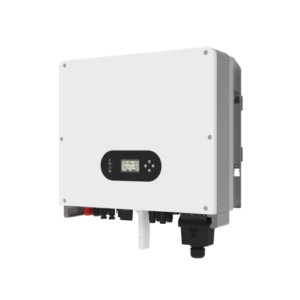目录
ToggleIn the world of modern energy solutions, the three phase inverter is the most important device for efficient power conversion in industrial, commercial, and even residential applications. With the advancement of renewable energy technologies and the push for cleaner energy, understanding the working principles of a three phase inverter is important for professionals and enthusiasts alike.
What is a Three Phase Inverter?
A three-phase inverter is an electronic device that converts direct current from a power source, such as solar panels or batteries, to three-phase alternating current. In single-phase systems, power delivery takes place through only one waveform, but in three-phase systems, it employs three; each of the waveforms is 120 degrees out of phase with the others. This creates a more stable and efficient power supply, making it ideal for high-demand applications.

Basic Operation of a Three-Phase Inverter
A three-phase inverter is basically working on semiconductor switching devices such as insulated-gate bipolar transistors (IGBTs) or metal-oxide-semiconductor field-effect transistors (MOSFETs) switching DC input to AC output.
Here is an oversimplified summary of how that works:
Input: DC-the inverter input is direct current, which most likely comes from solar panels or a battery energy storage system.
Pulse Width Modulation: The inverter uses a technique called PWM in order to regulate the switching action of its transistors. This produces pulses that resemble the shape of a sine wave.
Phase Shifting: The generated pulses are adjusted by 120 degrees to produce three separate waveforms that are phase-shifted. Such a phase shift is essential in producing three-phase AC power.
Filtering: The switching circuit output is passed through filters so that the waveform obtained would be close to a pure sine wave.
Three-Phase AC Output: This output will now be of a high quality, stable three-phase AC that will be suitable to power up a motor, some industrial equipment, or even heating and cooling in large scales.
Applications of Three Phase Inverters
Three phase inverters are applied for:
Industrial Machinery: Powering heavy-duty motors and equipment with consistent and reliable electricity.
Renewable Energy Systems: Converting solar or wind energy into grid-compatible power.
Electric Vehicles: Managing the complex energy demands of EV motors.
Grid-Tied Systems: Feeding excess power back into the grid for energy savings.
Why Choose Felicity Solar’s Three Phase Inverters?
Felicity Solar’s three-phase inverters are the most efficient, robustly designed, and technologically advanced in the market. Our inverters are designed with smart monitoring, enhanced cooling systems, and seamless integration into the grid, catering to both modern energy policies and demanding industrial requirements. Furthermore, our quality commitment ensures longevity and reliability, which reduces long-term operational costs.
European Energy Policies
European energy policies focus on adopting renewable energy sources and efficient power systems. In this regard, three phase inverters perfectly fit in with the integration of renewable energy sources such as solar and wind into the power grid. The reduction in carbon emissions also adds to energy independence and sustainability.
Conclusion
Understanding how a three phase inverter works highlights its importance in today’s energy landscape. Whether you’re upgrading your industrial systems, installing renewable energy solutions, or simply looking to improve energy efficiency, investing in a high-quality three phase inverter is a smart choice. Explore Felicity Solar’s offerings to find the perfect solution tailored to your needs.
0